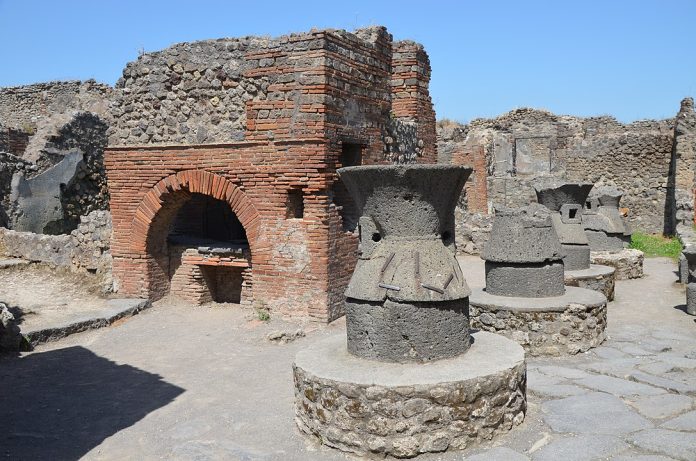Ancient Roman Salt – Garum’s Role in Cuisine: Blog on Culture & Social History
The culinary practices of the ancient world, especially those of ancient Rome, have fascinated historians and food enthusiasts alike. One of the most intriguing aspects of Roman cuisine is how they achieved the salty flavors using ancient Roman salt that was so integral to their meals.
Unlike modern times, where table salt is ubiquitous, the Romans had a unique approach to seasoning their food. This article delves into the various methods and ingredients the Romans used to make their meals salty, with a particular focus on the famed fermented fish sauce known as garum or liquamen garum.
We will explore the historical context, production methods, and culinary applications of these ancient Roman recipes.
The Importance of Salt in Ancient Rome
Salt was a fundamental seasoning in ancient Rome, essential not only for its flavor but also for its preservative qualities. Pliny the Elder famously remarked, “Civilized life cannot proceed without salt: it is so necessary an ingredient that it has become a metaphor for intense mental pleasure.” This statement underscores the vital role salt played in Roman society, both in culinary and cultural contexts, as seen in the works of Apicius.
Salt as a Commodity
Salt was highly valued and often difficult to obtain, making it a precious trade item. It was considered a form of currency by many societies, including Rome. Roman soldiers were even paid in salt, a practice that gave rise to the word “salary”. The availability of salt was pivotal to the development of civilizations, influencing the power and location of great cities.
Sources of Salt
The Romans obtained salt from two main sources: sea water and rock salt. Sea salt was produced through the evaporation of salt water, while rock salt was mined from underground beds. Throughout the Roman Empire, salt-works were commonly public property but were leased by the government to the highest bidder.
Garum: The Quintessential Roman Condiment
Garum was the most important flavoring agent in ancient Rome, often referred to as the “salt of the Roman kitchen.” This fermented fish sauce was ubiquitous in Roman cuisine, mentioned in 347 out of 459 recipes in the ancient cookbook “De re coquinaria.” Garum, made from anchovy and salt, added a salty flavor to dishes and was a staple in Roman cooking.
Production of Garum
Garum was made by fermenting small fish like sardines and mackerel with salt in earthenware jugs or pots. The process involved layering whole fish and salt, then allowing the mixture to ferment over time to make garum. Pliny the Elder described garum as “a choice liquor consisting of the guts of fish and the other parts that would otherwise be considered refuse.” The production of garum was an odiferous task, often carried out by slaves and laborers.
Varieties and Uses of Garum
Garum was sold in different grades and prices, depending on the fish used and the concentration of the liquid. It was used in a wide range of dishes, from soups and sauces to meat and even cocktails. Modern chefs have also adopted the name garum to describe sauces made from fermenting various ingredients with salt and koji, reminiscent of ancient recipes.
Other Salty Ingredients and Seasonings
While garum was the most common salty condiment, the Romans also used other ingredients to achieve salty flavors in their meals.
Salt
Despite the prominence of garum, salt itself was still used in Roman cooking, though less frequently. It was mentioned in only three recipes in “De re coquinaria.” Salt was fundamental for preserving food and was central to human history for thousands of years, especially in the ancient world.
Herbs and Spices
The Romans used a variety of herbs and spices to flavor their dishes. Locally available seasonings included garden herbs like cumin, coriander, and juniper berries, which were often used in ancient recipes. Imported spices such as pepper, saffron, and cinnamon were also popular. The Romans believed that these herbs and spices had medicinal properties and were important for both flavoring and preserving food, much like how they used salt.
Silphium
Silphium was a highly prized herb from Cyrenaica (modern-day Libya) that added a unique flavor to Roman dishes. However, it was over-harvested into extinction during the reign of Nero and was later replaced with laserpicium, a type of asafoetida exported from present-day Afghanistan.
The Role of Salt in Roman Society
Salt was not just a culinary ingredient; it played a significant role in Roman society and economy.
Economic Importance
Salt was a highly valued commodity and was often used as a form of currency. The Roman state distributed rations of unmilled wheat, known as frumentatio, to as many as 200,000 people every month. Salt was also essential for preserving food, which was crucial for feeding the large population of Rome and its armies.
Cultural Significance
Salt had a profound cultural significance in ancient Rome. It was used in religious rituals and was considered a symbol of purity and hospitality. The phrase “worth one’s salt” originated from the practice of paying soldiers in salt, indicating a person’s value or worth.
Conclusion
The ancient Romans had a sophisticated approach to seasoning their food, with garum being the most important salty condiment. This fermented fish sauce was a staple in Roman cuisine, adding a unique umami flavor to a wide range of dishes. While salt itself was used less frequently, it was still a fundamental seasoning and played a significant role in Roman society and economy.
The use of various herbs and spices further enriched the flavors of Roman meals, making their cuisine both diverse and complex. Understanding these ancient practices not only provides insight into Roman culinary traditions but also highlights the enduring importance of salt in the ancient world. Blog by Outreinfo

